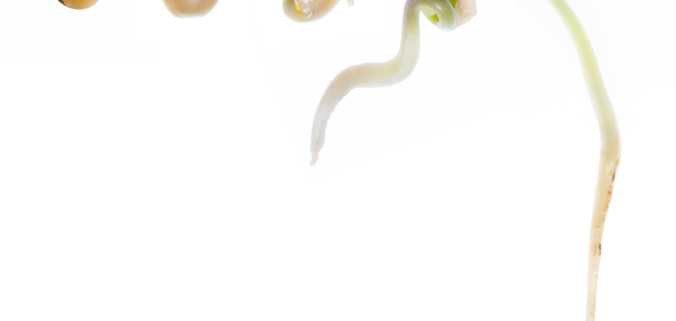A Flash Drought, Cover Crops and Dry Dirt… Which Soybean Seeds Are Still Viable?
Many of us, including myself, have finished our 2023 soybean planting in less than ideal soil conditions. Often the ground was worked, a little on the wet side, leading to clods and variable seeding depths or we no-tilled into a standing cereal rye cover crop, with less than adequate soil moisture, during a flash drought. Beginning reports of variable and delayed soybean emergence in conventional (more common) and no-till cereal rye cover crop systems are raising replant and seed viability questions in several areas across the Midwest.
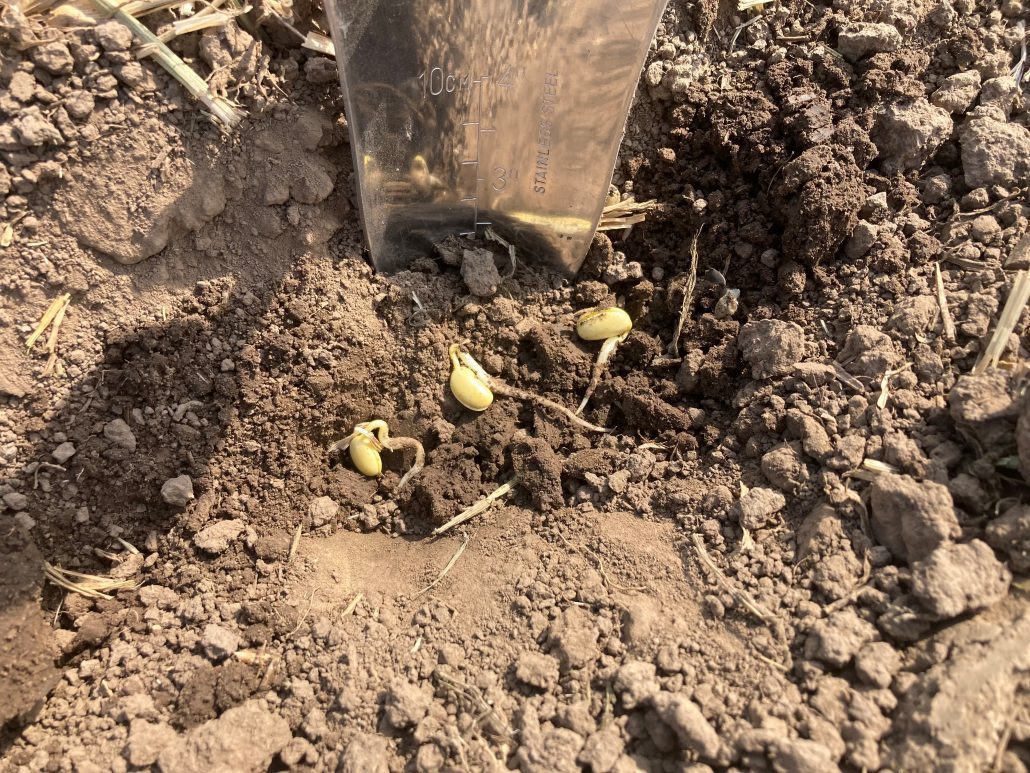
Image 1. Soybean seed planted into adequate soil moisture in a conventional tillage system on 5/29/2023 and germinating normally (image taken on 6/1/2023).
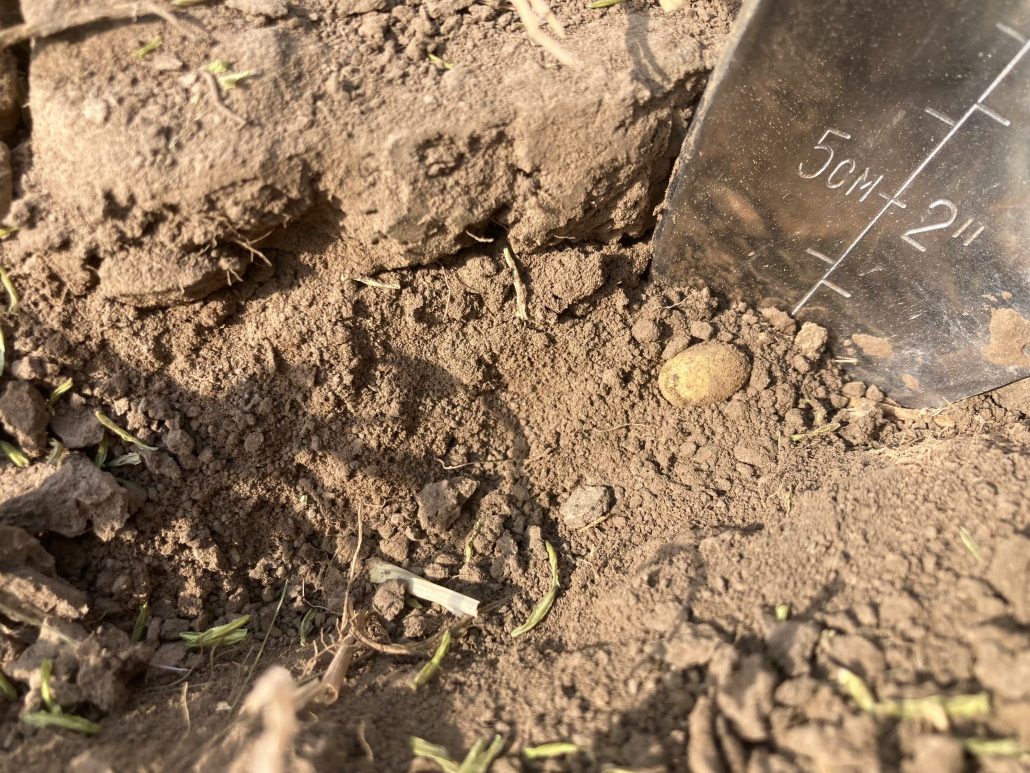
Image 2. Soybean seed planted into a no-till cereal rye cover crop system on 5/29/2023 and had enough soil moisture to swell but not brake the seed coat…yet… (image taken on 6/1/2023).
If soybean was planted into dry soil and had not imbibed water (seed did not swell) then there is little to no replant concern for growers. Once a significant rainfall event occurs, the soybean will imbibe water, germinate, and should emerge normally. For yield estimates, we would assign the day it rained as the new planting date.
The more difficult question to answer is “How viable is the soybean seed once imbibition and/or germination has begun?” The critical seed moisture content for soybean germination is ~20%. A soybean seed that has imbibed water, has a split seed coat, or has an emerged radicle will continue to germinate and grow as normal once the seed is re-hydrated if the seed (embryo) remains above 20% moisture (Senaratna and McKersie, 1983) (Image 3).
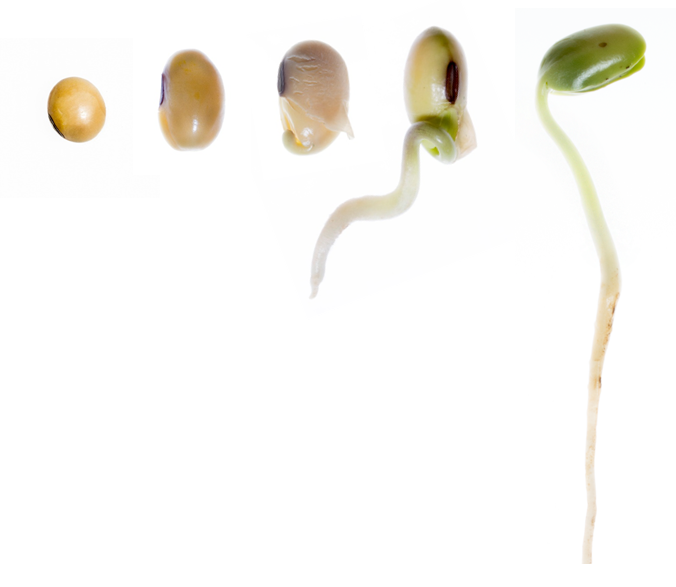
Image 3. Soybean germination
If the moisture content within a soybean seed falls to 10% due to dry conditions after germination has started, then a dramatic difference exists among the different seed germination stages. If the seed has imbibed water for 6 hours (seed is swollen, but the seed coat has not broken), then the seed is dehydrated to 10% moisture, germination is not affected. If the seed has imbibed water for 12 to 24 hours (seed coat broken, but prior to radicle emergence), then germination is reduced to 60 to 65%. If the radicle has emerged and seed moisture levels drop to 10%, then no survivors can be expected (Image 4).
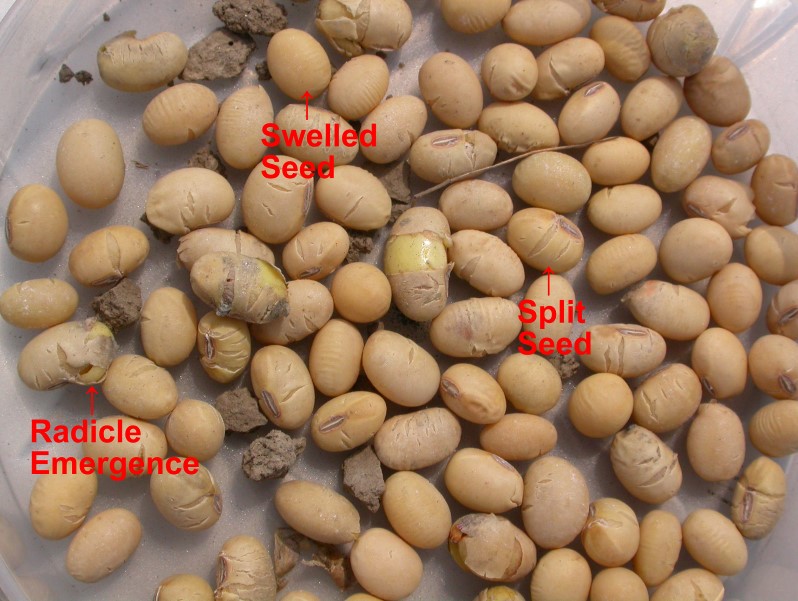
Image 4. Variation in soybean seed imbibition.
To test seed viability, growers can conduct a simple germination test. First excavate 100 soybean seeds from your field and wrap them in a damp paper towel. Place these seeds in a warm location, and after 24 to 36 hours, count the number of seeds that have germinated (Image 5). Remember that a typical soybean germination is 90%.

Image 5. Soybean germination roll test
Literature Cited:
Senaratna, T. and B. D. McKersie. 1983. Dehydration Injury in Germinating Soybean (Glycine max L. Merr.) Seeds. Plant Physiology 72: 620-624.

